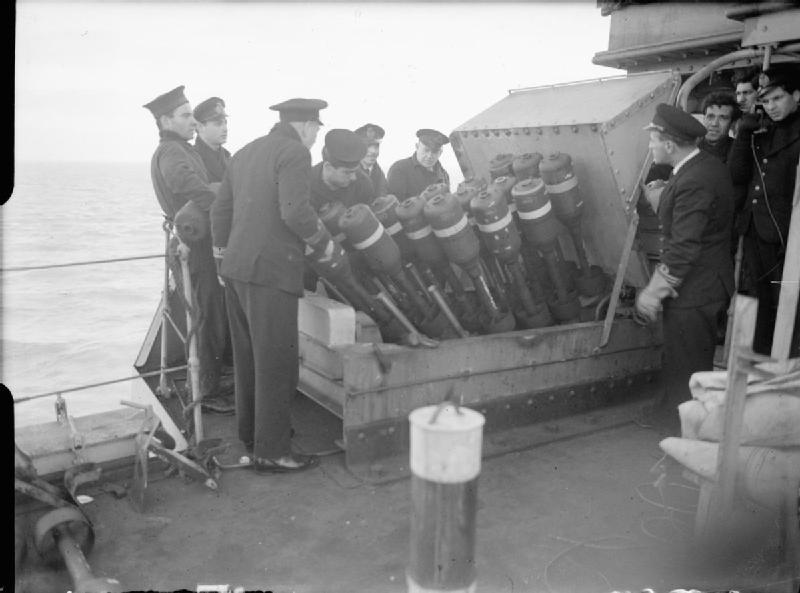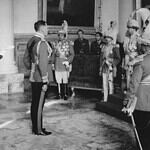































These Under-the-Radar Allies Helped Win World War II
A truly global conflict, over 70 nations took part in the fighting of World War II. Looking back at the period today, however, you might be surprised at the countries involved and the sides they took during the war. For example, it’s hard to imagine Cuba siding with the US today, but that is precisely what happened 80 years ago. Let's take a closer look at some of the under-the-radar Allies that supported the war effort against Axis forces.
15. Iran
Occupied by British and Soviet forces in 1941 to help secure Iran’s oil-rich fields, the country finally joined the Allies as part of the Tripartite Treaty in 1942. Ultimately, Iran would become an essential corridor for Lend-Lease aid to the Soviet Union, allowing for over 5 million tons of supplies. As vital as Iran was to the war effort, it received minimal recognition, though it was considered an ally when it joined the UN.
14. Brazil
During the initial stages of the war, Brazil maintained neutrality and kept up trade with both the Allies and Axis powers. As the war progressed, the US leaned heavily on Brazil through diplomatic and economic efforts to bring them into the war. Brazil ultimately let the US set up air bases while sending 25,700 troops that did most of their fighting on the Italian front between September 1944 and May 1945.
13. Cuba
Cuba’s geographical location made it strategically important for America during World War II, particularly for military positioning and surveillance in the Caribbean. In December 1941, Cuba declared war on the Axis powers, becoming one of the first Latin American countries to do so. As a result, Cuba was a big recipient of benefits from the US Lend-Lease program. Notably, Cuban forces were involved in the sinking of the German submarine U-176.
12. Saudi Arabia
Still a strong US ally, Saudi Arabia surprisingly cut off ties with the German government on September 11, 1939, two years before the US entered the war. After cutting ties with Japan in October 1941, Saudi Arabia became a consistent oil supplier to the Allies and allowed the US to build an air force base near Dhahran.
11. Czechoslovakia
After Germany began to occupy Czechoslovakia in 1939, the country’s leadership was exiled to London. From there, they organized resistance as Slovak and Czech troops fought in the Battle of Britain as pilots in RAF squadrons and the Siege of Tobruk. They also participated in Operation Anthropoid, which was the assassination of SS leader Reinhard Heydrich in Prague.
10. Mexico
A close US ally now, Mexico isn’t likely to come up in many conversations about Allied forces in World War II. However, the country declared war on Germany in 1942 after two Mexican oil tankers, bringing oil to the US, were attacked. Mexico formed a fighter squadron that eventually liberated islands in the Philippines.
9. Dominican Republic
Beyond its welcoming of those affected by the war (such as Jewish refugees), the Dominican Republic declared war on the Axis powers four days after the Pearl Harbor attack. The DR didn’t directly participate in battles, but it provided troops to the US military, many of whom received medals and commendations for combat action.
8. Ethiopia
After being invaded by Italy in 1935, Ethiopia joined the Allied forces under the British Army after the country’s Emperor fled. With Italy occupying the country, the Ethiopian government took part in British planning of Italian East Africa and declared war on Germany, Italy, and Japan in December 1942. Ethiopian forces, alongside British troops, forced Italy to utilize significant resources to hold the country.
7. Nepal
Nepal participated in the Allied war effort as part of the British Empire, and Gurkha soldiers were heralded for their bravery and skill. These troops took part in battles at El Alamein and Monte Cassino, earning numerous medals. It’s believed that as many as 112,000 Gurkha troops and 200,000 Nepalese participated in the war for the British.
6. Greece
After being invaded by Italy in October 1940, Greece made swift overtures to join the Allies. Fortunately, Greek forces were formidable enough to stop the Italian advance into Albania, as the Greeks managed to hold them at bay. Additionally, Greek forces forged a resistance movement after Germany took over the country in April 1941 as part of a “Free Greece” movement.
5. South Africa
As part of the South African monarchy, there was a heavy pro-German sentiment, especially among the Afrikaner nationalist movement. As a result, South Africa’s entry into the war was very politically divisive, but this didn’t stop 334,000 South Africans from participating in the war effort on behalf of the Allies.
4. Belgium
Once Belgium became an occupied state in 1940, its government-in-exile began to organize a resistance from London. Belgian troops would take part in the Royal Air Force as pilots and on the ground in the Normandy campaign. Belgian forces would disrupt German operations, enabling them to win Allied medals, though the Belgian operations are often overlooked in favor of larger nations.
3. China
Arguably, the United States' biggest adversary on a global stage these days is China. Still, before this happened, China was already aligned with US interests as the country went to war with Japan in 1937. The Soviet Union provided China with supplies until 1941. Still, after the attack on Pearl Harbor, it once again declared war on Japan and would fight in dozens of major conflicts against Japanese armed forces.
2. Mongolia
An ally of the Soviet Union, Mongolia is an ally of convenience to countries like the United States, Britain, and France. The country would supply 500,000 horses to the Red Army, which would be utilized during conflicts like the Battle of Moscow. The Mongol army also fought in the Soviet-led invasion of Manchuria against Japan.
1. Iceland
While Iceland didn’t contribute troops to the war, its geographical position was vital to Allied efforts. In 1940, Iceland was a neutral nation, although the U.S., which would become a strategic partner, built an Allied base. Its positioning became critical for the Battle of the Atlantic, supporting efforts to track down and destroy U-boats.
The image featured at the top of this post is ©Fox Photos / Hulton Archive via Getty Images